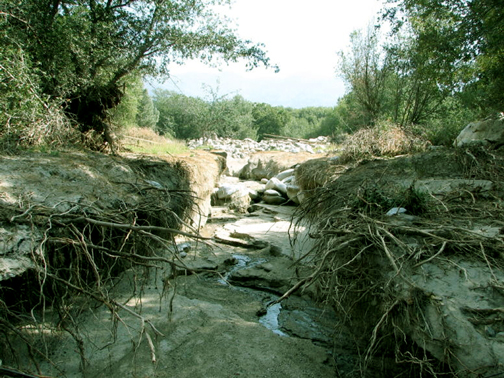U.S. Wildfire Cost-Plus-Loss Economics Project
WATER
The Pacific Crest Trail, May 14, 2004. Taken near the southern entrance to the Mount Jefferson Wilderness Area from Highway 20 Santiam Pass, in Jefferson County, Oregon. In addition to being unsightly and dangerous due to the threat of falling limbs, trees and reburning, much of this trail segment has been closed or difficult to traverse since the 2003 B&B Fire Complex because of accumulating debris. (Photo by B. Zybach, Oregon Websites & Watersheds Project, Inc.).
Water. Direct losses include water usage for suppression action, local water system shutdowns, and reductions in drinking water, hydropower, and irrigation supplies and sales. Indirect losses are related to pre-fire planning, system investments, and wildfire-related pollution control devices. Post-fire losses include degradation of domestic water, irrigation, and hydropower supplies, system repairs, administrative costs, sediment and pollution controls and mitigation, and long-term changes in water yield and watershed ability to collect and store water.
Case Studies.
1993 Kinneloa Fire, California (Gonzalez-Caban et al. 2008)
Angeles National Forest, California (Loomis et al. 2003)
General References.
Property |
|||||
Energy
|
Heritage
|
© 2009 Oregon Websites & Watersheds Project, Inc. and Western Institute for the Study of the Environment.
